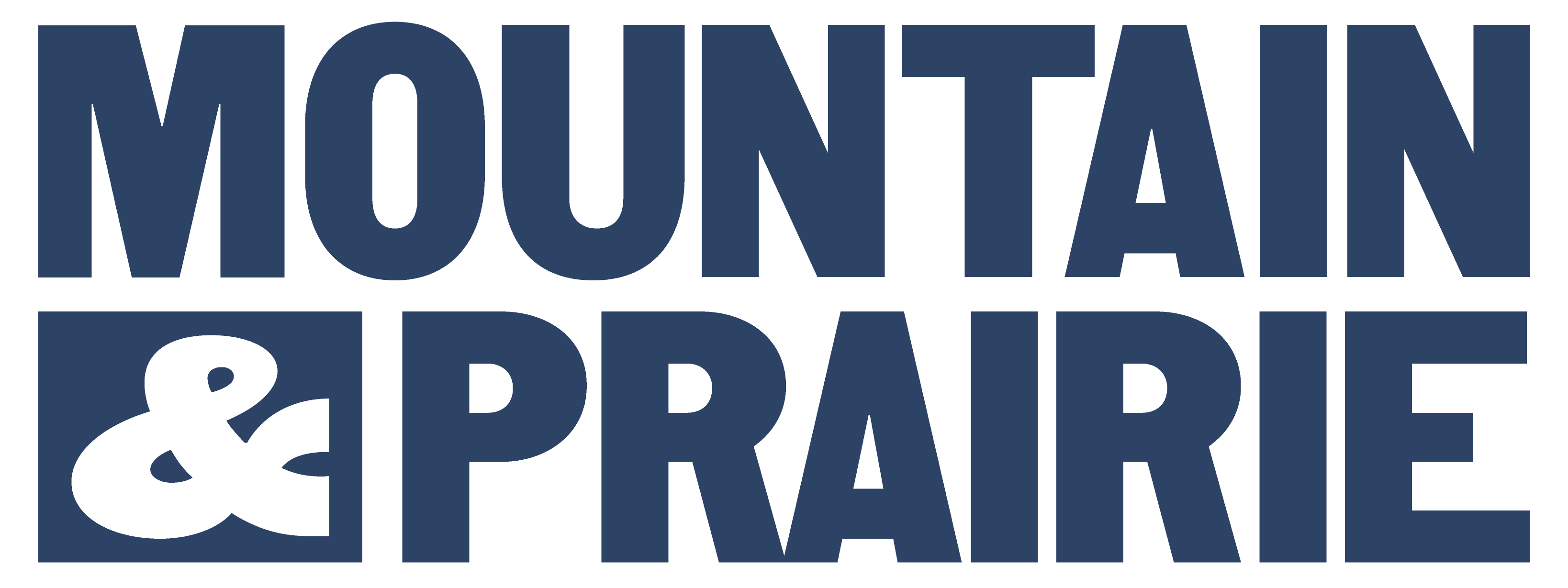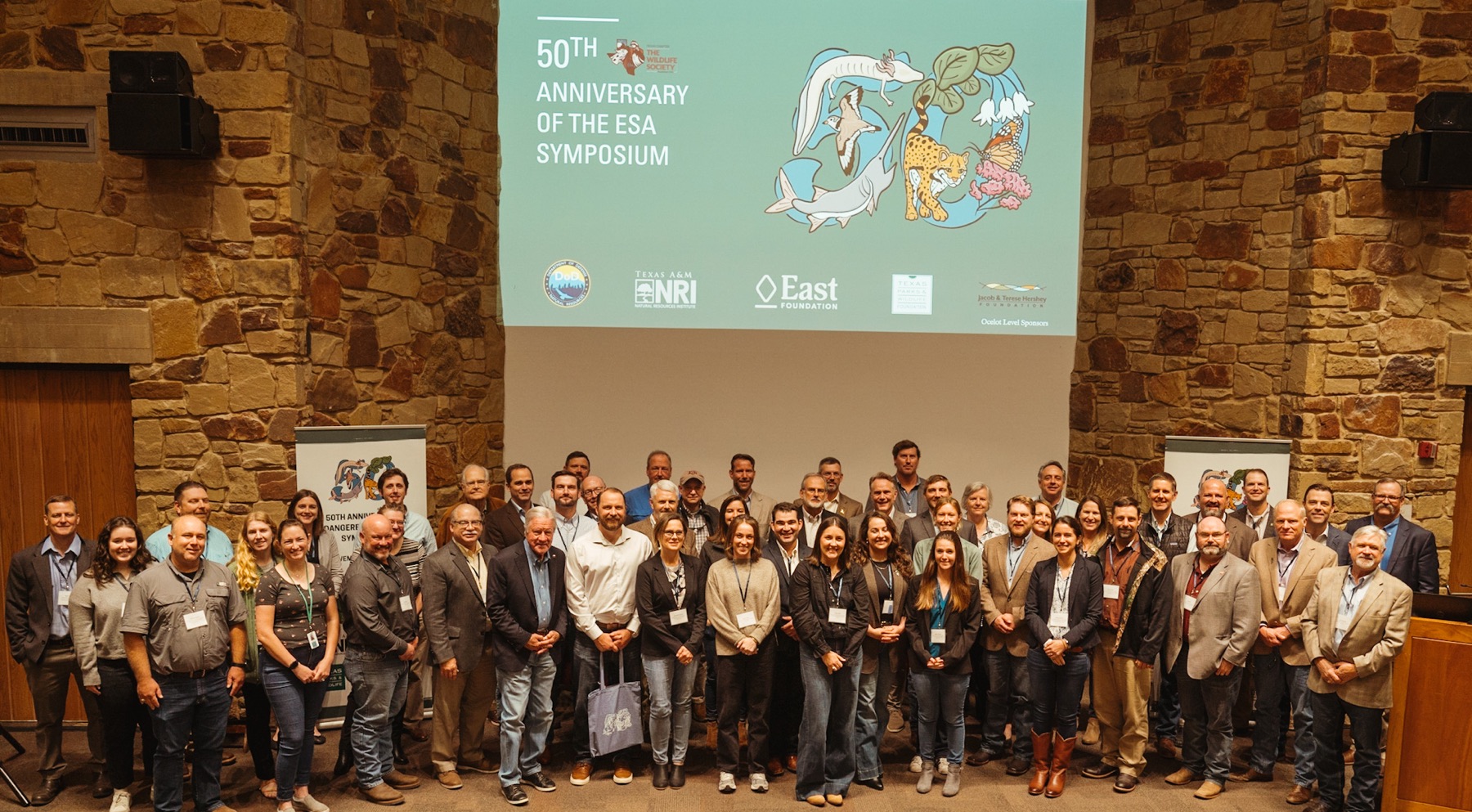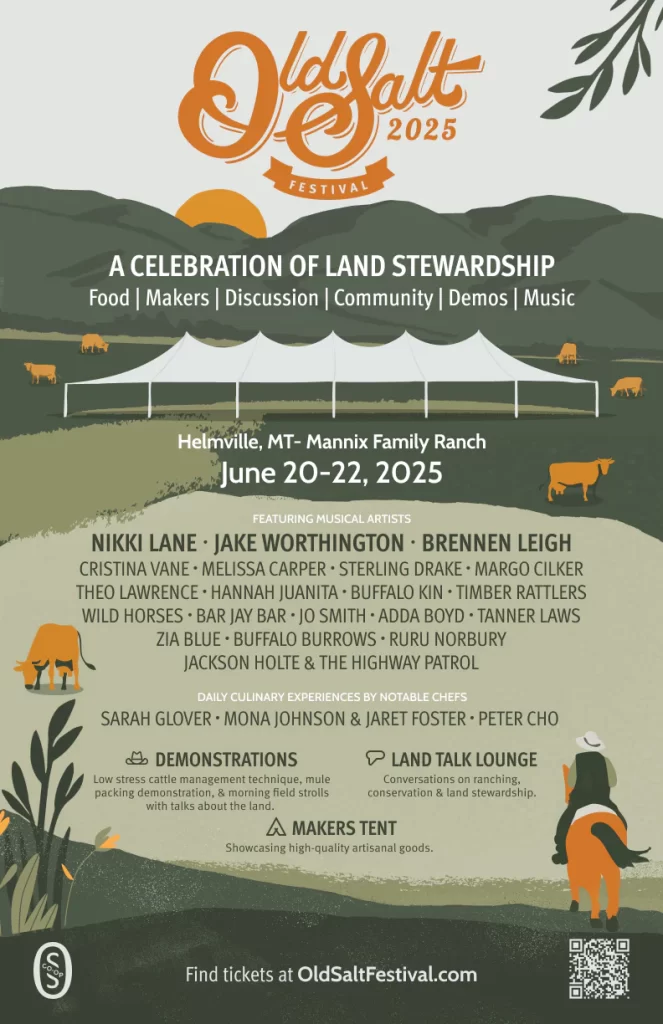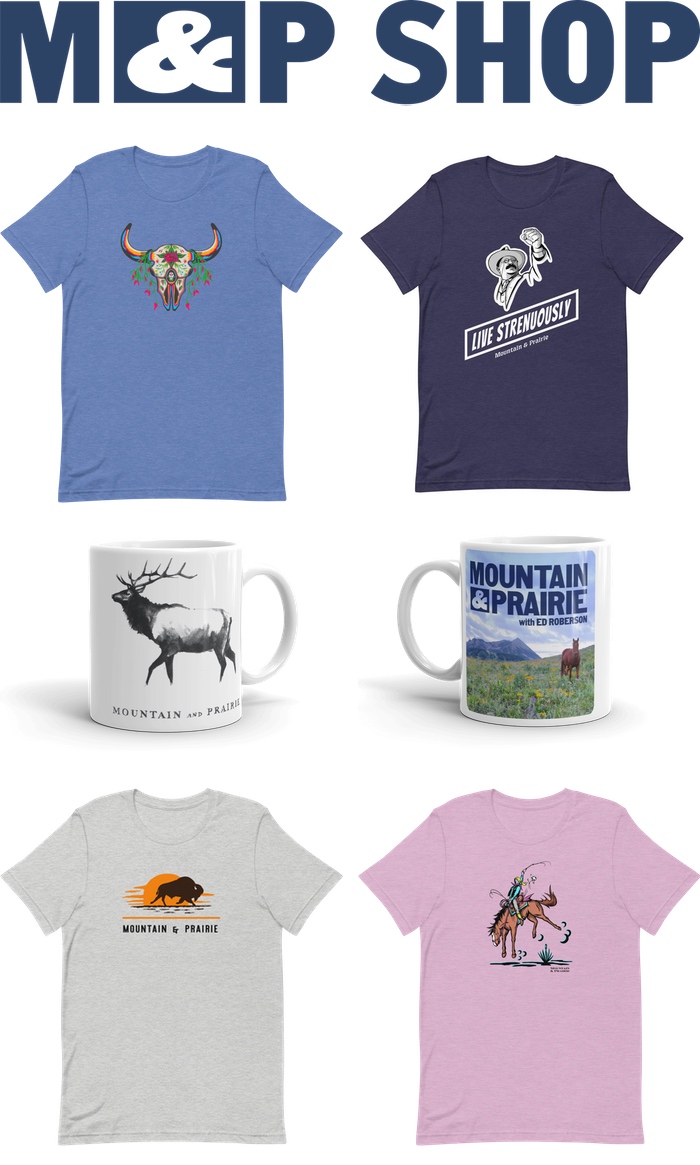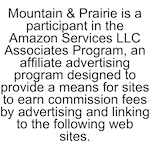This is a special live episode that was recorded in Austin, Texas, in November of 2023 at the 50th Anniversary Endangered Species Act Symposium. As you may know, 2023 marked 50 years since the passing of the Endangered Species Act (ESA), which is one the most influential and impactful pieces of conservation legislation in United States history. This symposium gathered together an impressive and wide range of ESA experts from governmental, non-profit, and for-profit organizations, and we spent the day discussing the ESA’s fascinating and complex past, present, and future.
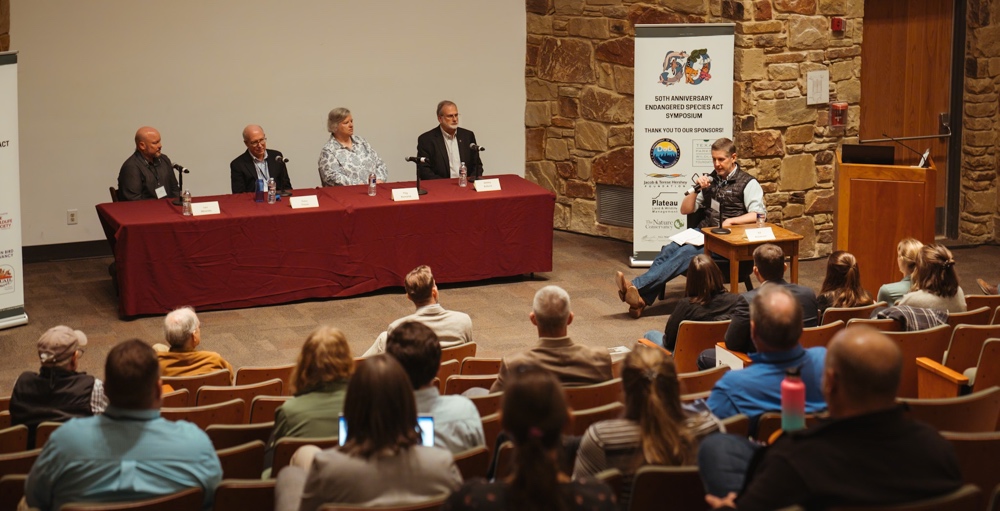
In this episode, we’ll hear from four leaders who have worked in the trenches of conservation for decades, and each of them brings a unique perspective on both the challenges and opportunities that the ESA creates for on-the-ground conservation. The panelists are:
- Gary Frazer – Assistant Director for Ecological Services at the US Fish and Wildlife Service
- Peg Romanik – Recently retired high-ranking attorney from the Department of Interior
- Jimmy Bullock – Senior Vice President at Resource Management Service LLC
- Leo Miranda-Castro – Former USFWS Director and current Executive Director of Conservation without Conflict
All four of these distinguished panelists have worked extensively within the frameworks of the Endangered Species Act, and they bring a wealth of practical and philosophical knowledge about the ESA’s impact over the past 50 years… and its expected impacts in the future. But perhaps more importantly, these four panelists helped me to appreciate the humanity behind the historic, powerful legislation– the smart, dedicated, conservation-minded leaders whose work has allowed the act to effect change and evolve over the past five decades.
We covered a lot during this hour-long discussion, and highlights include: How the ESA switched from a more punitive to a more collaborative approach; concrete examples of productive, collaborative conservation; working with the extreme opinions about climate change; hopes for the future of market-incentivized species conservation; examining potential political threats to the ESA; the evolution of using the ESA for single species conservation to using it for landscape-scale conservation, advice for young people in the conservation field, and much more.
This episode was the last panel discussion of the day, so if you’d like to listen to the first three panels, you can do so below. Those earlier sessions include discussions with everyone from one of the ESA’s authors to some of today’s most renowned conservation thought leaders– I really can’t imagine having a more impressive group of conservation practitioners in one room. You can check out the Symposium program, which includes all the details of the day’s event and speaker bios.
And one more thing: This symposium was organized by the fellows of the James G. Teer Conservation Leadership Institute, which is sponsored by The Texas Chapter of The Wildlife Society. The mission of the Teer Institute is to ensure a future legacy of well-trained conservation leaders by providing professional training in leadership skills and contemporary conservation. I was so impressed with all the fellows and left this event feeling very optimistic about the future of conservation in Texas and beyond.
A huge thank you to the fellows and to Dr. Roel Lopez of Texas A&M University for inviting me down to Austin to moderate this panel. It was an honor to be in the same room with all these amazingly inspiring folks. Hope you enjoy!
All photos by Brittany Wegner
LISTEN & DOWNLOAD:
Apple Podcasts
Spotify
Google Podcasts
…or wherever you get your podcasts!
RESOURCES:
Topics Discussed:
- 4:00 – Introduction
- 10:15 – Peg describes when the ESA switched from a more punitive to a more collaborative approach
- 14:45 – Leo’s example of exceptional collaborative conservation
- 21:00 – How Gary handles extreme opinions about climate change
- 27:00 – Examples of Jimmy’s work with the ESA that became financially sustainable
- 31:30 – Hopes for the future of market-incentivized species conservation
- 34:45 – Examining the security of the ESA
- 39:00 – Discussing the evolution of using the ESA for single species conservation to using it for landscape-scale conservation
- 44:30 – The panel’s advice for young people in this field
- 53:15 – Wrapping up and acknowledgments
Information Referenced:
- James G. Teer Conservation Leadership Institute
- Symposium Program and Speaker Bios
- Endangered Species Act
- Dr. Roel Lopez
- Peg Romanik
- Leo Miranda
- Gary Frazer
- Jimmy Bullock
- Gopher Tortoise
- National Alliance of Forest Owners
- Section 4 listings
- Katherine Hayhoe
- Saving Us by Katherine Hayhoe
- Rio Encantado, Puerto Rico
- Aldo Leopold
- The Ladybird Johnson Wildflower Center
- East Foundation
- Department of Defense Natural Resources
- Texas Parks and Wildlife Foundation
- Hershey Foundation
- Caesar Kleberg Wildlife Research Institute
- The Temple Foundation
- Bowman Consulting
- The Nature Conservancy
- Welder Wildlife Foundation
- Texas A&M
- Aldo Leopold Foundation
Earlier Symposium Sessions
Session One – Past

Session Two – Present
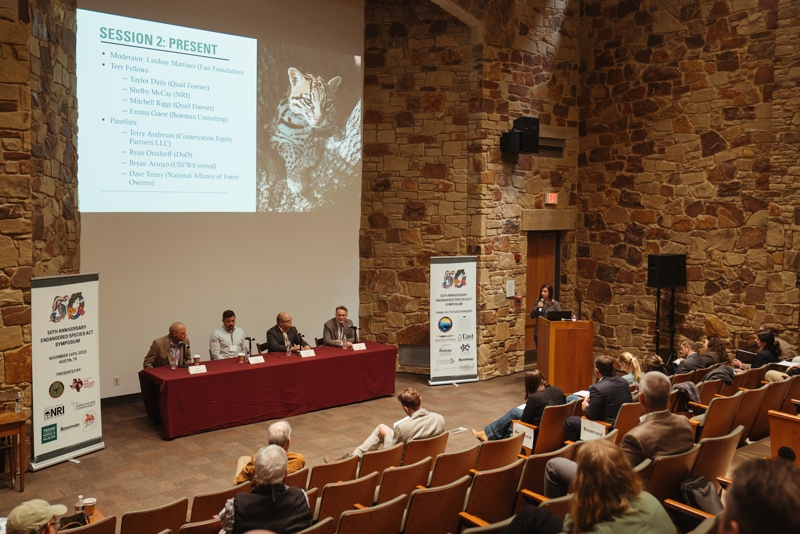
Session Three – Future
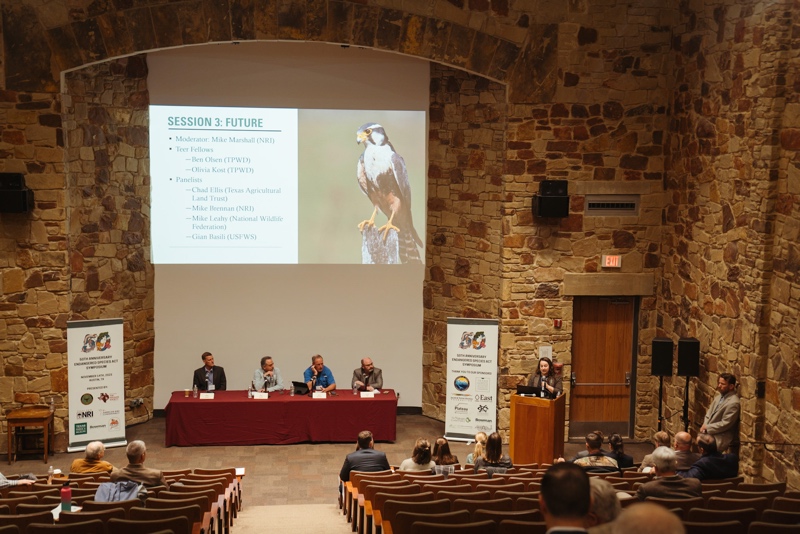
Enjoy this episode? Then you might like these too:
- Landscape-Scale Management in a Private Land State
- Equitable Access to the Outdoors in Texas
- Rebuilding a Resilient, Regional Meat Supply Chain – LIVE at the Old Salt Festival
- Erik Glenn Returns – Leadership, Innovation, & Commitment to Conservation
- James Prosek – Art, Philosophy, & Our Natural World
- Matt Cahill – A Deep Dive into the Sagebrush Sea
- Dr. Sara Dant Returns – “Losing Eden: An Environmental History of the American West”
Visit the podcast page for a full list of episodes where you can filter episodes by topic and guests’ vocations.
